Farming Simulator 2013: Further sowings, sprayings, harvestings and sale
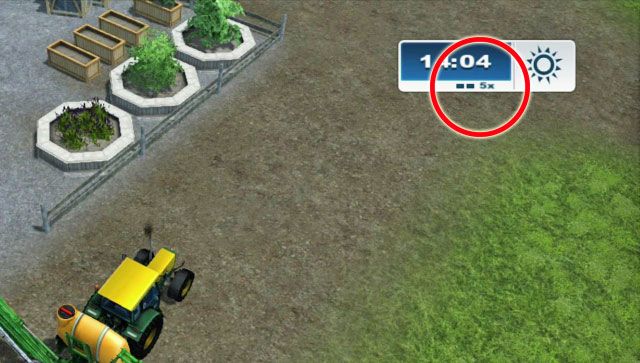
Field 29 is ready for growing crops. The time needed by the crops to fully grow depends on the time speed set in the game - you can see it in the upper-right corner below the clock. IT can be changed in the game settings. 5x means that time will flow 5 times faster, therefore 1 minute in real life will mean 5 minutes in the game world. You can set the scale as high as 60x or even 120x. However scales larger that 30x are only recommended for more experience players, as beginners might have problems with making it in time with harvesting crops. Crops which aren't harvested in time will wither. After getting familiar with the game, I'd recommend playing on 15x - 30x.
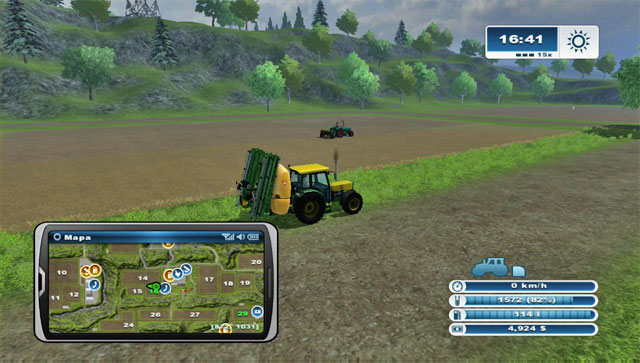
Beforehand you prepared field 16 for sowing. Head there with a tractor and a sowing machine and start sowing. In the meantime you can head there with a tractor and sprayer - you will need in just a moment, so you can pretty well bring it here already.
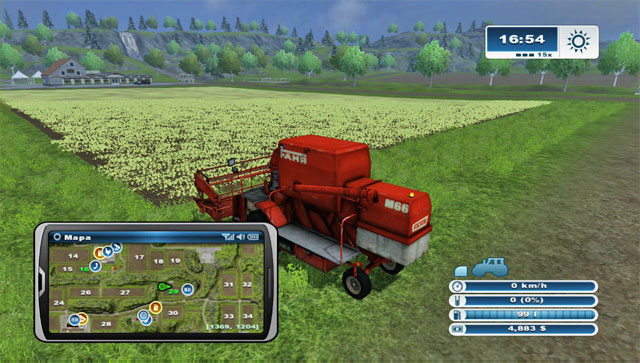
If the sowing is being done by a hired worker, the next step will be taking the harvester towards field 29. The harvester is very slow and it will take a lot of time, but you will be ready for the harvest. As you see, everything is based on managing the vehicles.
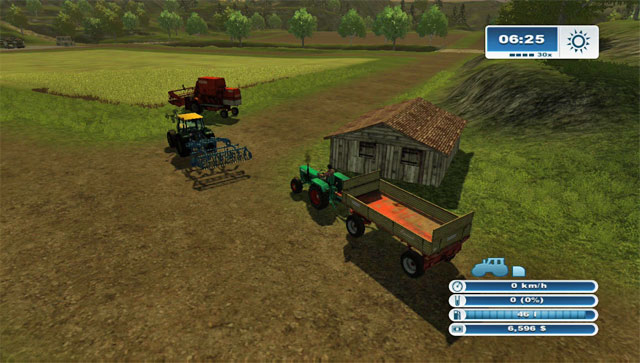
After sowing and spraying field 16 you have to move to field 29. Wheat should be almost ripe and the harvester can wait for its turn. Once the tractor and trailer are free as well, drive them here to collect the harvested crops. Do the same with the cultivator (which can begin preparing the field for another sew right after the harvest is done). If you can, bring the sowing machine here as well. That way you will be completely ready.

If you don't have anything else to do, you can switch the game speed to a higher setting for a while so that the crops grow faster. Fields ready to be harvested are marked with green on the map.
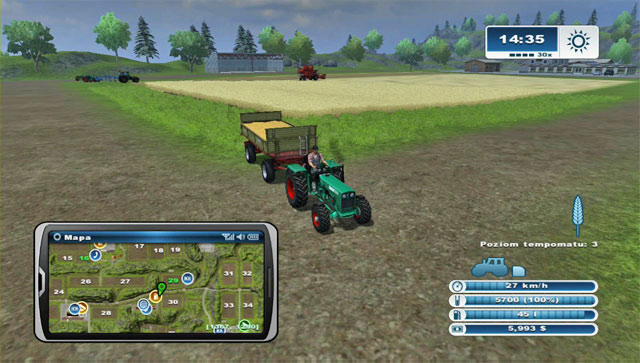
Remember that small tractors cannot be used with the cultivator or sprayer. That's why you have to attach them to the only bigger one you have. With a hired worker operating the harvester, keep beside with a trailer to collect the crops as it goes. When the trailer fills up, you have two options: either take it to the farm and drop into the silos, or sell it at once. If prices are good, i.e. they haven't dropped too much, you can sell it. Check out where prices are the best and head there. Unfortunately if the worker fills up the trailer, the harvester will just stop and wait. For now however you don't have a choice, as you can't afford a better trailer. After returning, collect another batch and stay nearby.
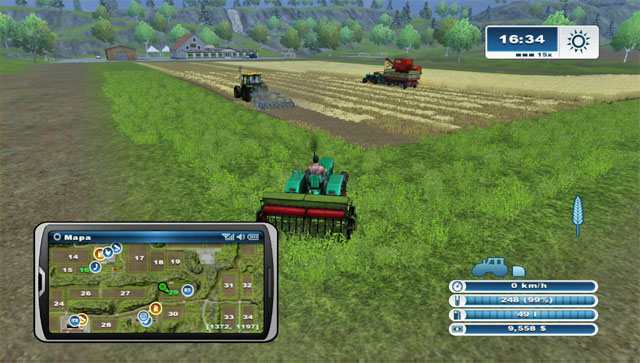
Don't wait for the harvester to send his job. If only it's possible, do a few things at the same time. Keep waiting with the trailer, but if the harvester already completed a few windrows, hire a worker for the cultivator. At the same time wait with the sower for your turn. If one of the machines moves dangerously close to the other (cultivating is faster than harvesting), just stop it for a while.
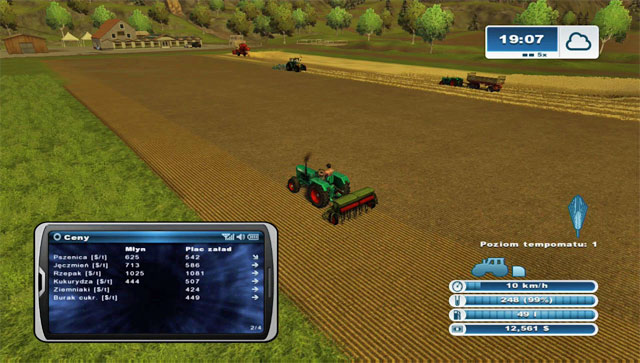
When the cultivator makes a few rounds around the field, hire a worker for the sewing. That way harvesting will continue on one side of the field, the middle will be cultivated and the other end sowed. You have to coordinate the operation well. When you harvest the next fragment and fill up the trailer, take it to the farm or sale it. When the harvest on this field finishes completely, check out whether she second one - number 16 - isn't ready to be harvested as well. Drive the harvester there and let the cultivation, sowing and then spraying continue on 29.
It's a rather hard and arduous fragment of the game, but it is worth to fight your way through it. Before you begin to develop your farm further by buying more fields you still have some investments waiting for you. In order to fix you budget a bit, you should complete some grass cutting missions - it's an easy and fast income (which you can read in the Missions chapter). As you have already familiarized yourself with the rules of the farm, you should consider an investment credit. All of that has been described in the Developing your farm chapter.
- Farming Simulator 2013 Game Guide
- Farming Simulator 2013: Game Guide
- Farming Simulator 2013: Further steps
- Farming Simulator 2013: Further sowings, sprayings, harvestings and sale
- Farming Simulator 2013: Additional hints
- Farming Simulator 2013: Finances earn or borrow?
- Farming Simulator 2013: Missions
- Farming Simulator 2013: Mowing grass
- Farming Simulator 2013: Transport missions
- Farming Simulator 2013: New missions frequency
- Farming Simulator 2013: Further steps
- Farming Simulator 2013: Game Guide
You are not permitted to copy any image, text or info from this page. This site is not associated with and/or endorsed by the developers and the publishers. All logos and images are copyrighted by their respective owners.
Copyright © 2000 - 2025 Webedia Polska SA for gamepressure.com, unofficial game guides, walkthroughs, secrets, game tips, maps & strategies for top games.
